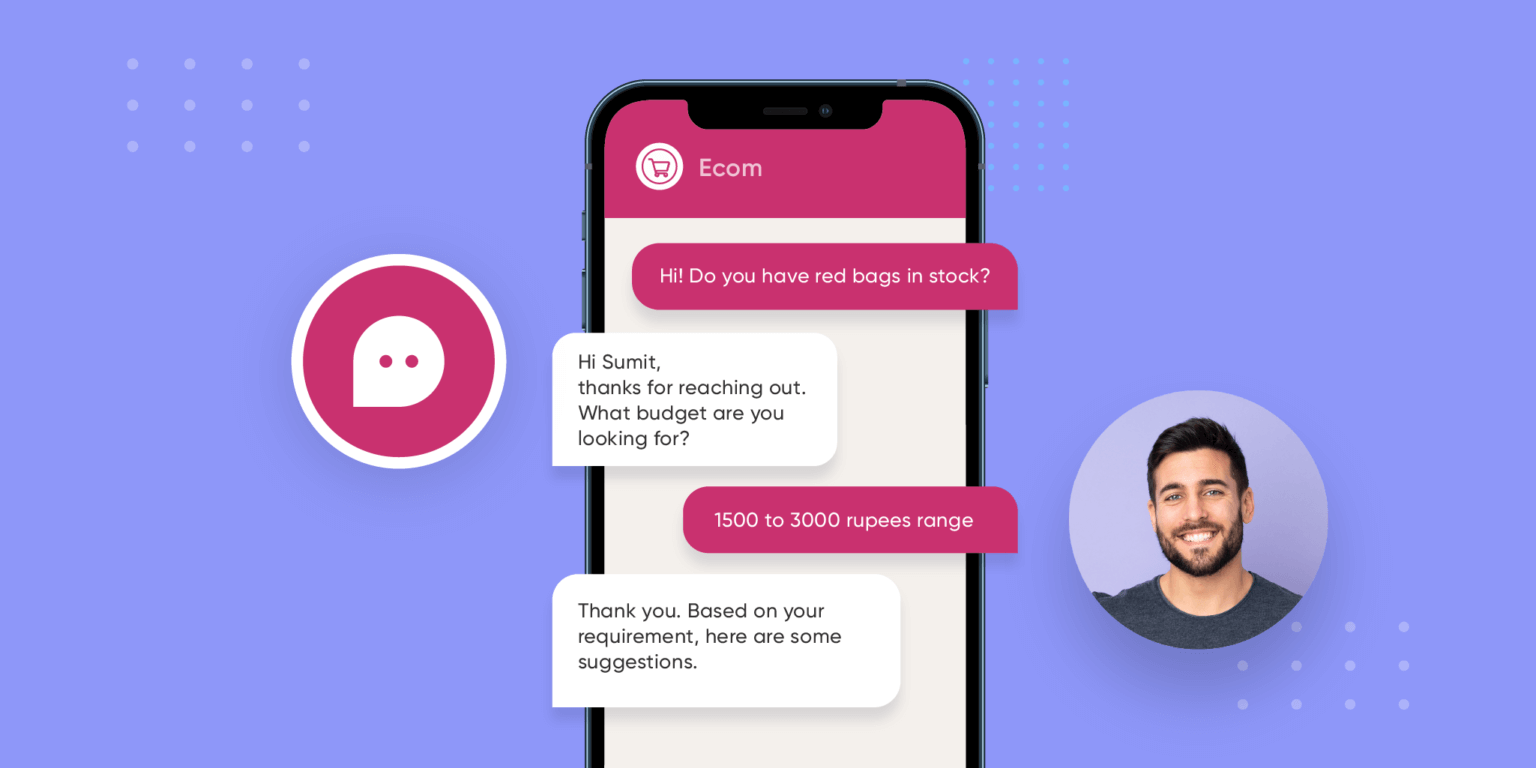Table Of Content

The term “conversation design” has been somewhat hijacked by the AI community, when it should, in fact, continue to include old-school, person-to-person, conversation design as well. To design good, relevant responses, user utterances must be understood in context. A good example of where this might be crucial is a customer support chatbot, where understanding of the specific issue and responding effectively in turn makes or breaks the customer’s experience. Conversation design (CxD) is about defining the interactions between the user and a conversational agent, based on how people communicate in real life. That means that every organization is going to be hiring people that can make these AI Assistants more human-centric and valuable.

Let's start a project together!
One of the fundamental mechanisms of conversation is this idea of turn-taking, where participants speak one at a time, in alternating turns. The goal is to avoid overlap, minimize silence between turns, and keep track of what’s been said in previous turns. Join virtual live sessions with leading experts from around the world, and get the insider’s view on creating AI Assistants. With this diverse group of experts, you can ask questions, connect with other students, and always learn the latest. Get an even deeper understanding by joining exclusive live expert classes.
Designing a Copilot? Start with Basics of Conversational AI
It's problematic when your persona doesn't appear to have any awareness of what is showing on the screen. Unless the user changes the subject, we can assume that the thread of conversation continues. Therefore, it's likely that ambiguities in the current utterance can be resolved by referring to previous utterances. Here, the user's question isn't understood, and a No Match error occurs. If you're using Dialogflow, go here to read more about adding context. By conversational implicature, "Last night I saw John at a restaurant with a woman" suggests that John was with a woman other than his wife, because if the woman had been his wife, the speaker would have said so.
The business value of conversation design
On Designing Couture: Jean Paul Gaultier & Julien Dossena In Conversation - AnOther Magazine
On Designing Couture: Jean Paul Gaultier & Julien Dossena In Conversation.
Posted: Tue, 11 Jul 2023 07:00:00 GMT [source]
The words we use allow us to effectively communicate and show credibility and expertise. However, using technical jargon or industry-specific words may have challenges when the LLM isn’t familiar with them. It’s possible the LLM could misinterpret the jargon if not given the right context. Here tonality and nuance will play a major role, there are many ways you can steer a conversation. Depending on what kind of nuance you paint your language in you’ll most likely end up in completely different places. Nancy Clarke is a Conversation Designer with the AWS Professional Services Natural Language AI team.
Design, preview and prototype your next chatbot or voice assistant
It focuses on the process of designing an interaction between a user and a system, via voice or text, based on the principles of human-to-human conversation. Basically, it’s the art and science of how people interact with one another. Currently, most AI assistants fail because the teams have too much focus on technology. They obsess over getting the technology to work and they don’t have the skills yet to think about the user experience. Now that organizations are catching up on this, there is a growing demand for conversation designers.
They are already accustomed to applying methods to understand and capture experience, and can use many honed skills, tools, and methods to aid organizations attempting to achieve better conversation. People do not appreciate taking extra time or jumping through hoops to find things out or to get things done. Research has shown that if a VUI does not offer a clear advantage to alternative ways of accomplishing the same task, users will avoid it. Successful VUI design therefore offers the benefits of relevance and expedience. Your persona needs to keep track of context in order to understand the user's utterances.
We also established that consumers increasingly like to interact with conversational interfaces and brands are eager to exploit this. But how do these brands design the best conversations possible? The work of mapping human language to digital interfaces translates to myriad other needs.

At its core, conversation design is about the flow of the conversation and its underlying logic. Therefore, one needs to start from the bottom up when redesigning an interface to be conversational. The logic that works for a graphical interface is almost never going to work as-is for a conversational interface.
In the air is a desire for solidity, for concreteness, for materiality—and pieces that carry their own weight, in every sense, are breaking into domestic design. So it’s logical that materials like travertine—and even more so, marble—are playing an important role in this design week. The line included a sideboard, a bedside table, and two low storage units designed by Muller Van Severen. In the pantheon of glass- and crystal-making, the rope—a long and hollow element crafted from hot twisting and stretching molten lava—is one of the most technical to achieve.
The difference is that, in the latter, both parties assume an undercurrent of cooperation in the conversation. Here, cooperation operates on the basis of the amount and relevance of information provided. Recently, Microsoft released its 2019 Voice Report, examining the rise of voice technology and digital assistants from a market-level perspective. Taking a cross-platform approach to conversation design is useful when you think about the range of possible devices and use cases you want to accommodate. As you can see, it can be difficult for each party in a conversation to “know” when it’s their turn. If you’ve ever been in a heated debate or a meeting with multiple stakeholders, you’ll know that turn taking presents a challenge.
To see a summary of this workflow in action, and learn even more about the process, download my ebook How to Design a Chatbot Script from Scratch. The main flows are the 1–3 main “tracks” your user can go down to complete the goal of the bot. These will be the most robust parts of your script, and likely intersect at some points. One way to think of it when building your outline is that the main flows represent chapters of the script. Many capabilities are required to launch a conversational AI application. Depending on the scale of a project, these capabilities may be found among a very small team, or may require much more specialization.
So what makes a chatbot different compared to, for example, a support article? Support articles also carry information that should help the user answer any questions he might have. However, articles are merely presenting the content to the user and are not interacting with them by listening and responding as chatbots do.
Conversation designers work to make the conversational flows naturally in these programs. A conversation designer's role can appear quite complicated because they have to meet the needs of the customer and the needs of the business they are offering the service to. They are the mastermind behind making the conversational experience almost human-like, but that's not all they can do. They often have to think if their work meets the business owner's vision and benefits the consumer's needs —all at the same time. I think Conversation Strategists will be the next phase of jobs we’ll see come out of chatbots (like we saw with social strategists breaking away from social media managers).
User stories define your customer’s goals, and why they’re important. It can follow the pattern “As a [User Type], I want to [Objective], so that I can [Need].” As a bank customer, I want to verify myself so that I can get my account balance. As a customer service representative, I want to know the context of the call before they’re transferred to me so that I can be prepared to address their concern. This may inspire a feature that presents a service representative with the information a customer has shared with a voice assistant, so that the customer doesn’t need to repeat themselves. The quote above remains one of my favorite—a short, simple way to define it.
Users should be able to get their answers quickly without distractions and pushy sales tactics. In natural conversation, participants take turns listening and sharing bits of information. The system should allow users to participate in the conversation and avoid long blocks of information that the user has to scroll through. Up next, in Section II, we explore What is conversation? Conversations should be viewed in the same light as any product or service—the outcome of thoughtful consideration of all the elements long before we enter the room, and then, measured and tracked for success.

No comments:
Post a Comment